Smithsonian Scholars Pick Their Favorite Books of 2019
Reading proved a bedrock in a year that saw a new Smithsonian secretary and celebrations of dinosaurs, Apollo 11 and women’s history
/https://tf-cmsv2-smithsonianmag-media.s3.amazonaws.com/filer/8d/c1/8dc1ae9c-c2bf-4a20-a5b9-6c79ff83af40/smithsonian_booklist_2019.png)
This year, the National Museum of African American History and Culture’s founding director Lonnie Bunch was tapped to become the Smithsonian’s 14th Secretary. In his new role Secretary Bunch promises to pursue a Smithsonian where the nation can look “for guidance, for information and for clarity.”
At the Smithsonian’s National Portrait Gallery, in anticipation of the 100th anniversary of the 19th amendment, historians offered that kind of clarity to the complex racial undertones in the historic quest for universal suffrage. The Portrait Gallery also announced the winners of the triennial Outwin Portrait Competition, yielding works that touched on LBGTQ rights and activism, the Black Lives Matter movement and gun violence.
Bringing clarity and guidance, the Smithsonian in 2019 dispersed a plethora of scholarship. At the National Museum of American History, curators took a deep dive into the history of the transcontinental railroad for its 150th anniversary. There, public historians also considered the role of the housewife across time and the confluence of our nation’s immigration policies on entrepreneurs in the food, wine and craft beer industries.
While shutting down enormous galleries for a major, seven-year renovation, the National Air and Space Museum launched a spectacular summer celebration in honor of the 50th anniversary of the Apollo 11 moon mission. Thousands of summer audiences witnessed an extraordinary video projection of the original rocket launch on the side of the Washington Monument.
Some of the most fearsome and iconic dinosaurs like T-rex, Triceratops, Camarasaurus, Allosaurus and Diplodocus came roaring back to life in the newly re-opened “Fossil Hall: Deep Time” at the National Museum of Natural History, highly acclaimed for its epic narration of the past 3.7 billion years of life on Earth, while addressing what human-caused climate change means for the future.
The Smithsonian’s multiple art museums paid homage to artists from the renowned James McNeill Whistler to Native artists like Jeffrey Veregge, T.C. Cannon and Jeffrey Gibson along with other contemporary artists Lee Ufan, Tiffany Chung, Rirkrit Tiravanija, David Levinthal, Patience Torlowei, Ginny Ruffner, Yun Suknam, Alicja Kwade and Pat Steir.
Books celebrating all of these ventures came out in droves from Secretary Bunch’s A Fool’s Errand, to Apollo’s Legacy from the Air and Space Museum’s scholar Roger G. Launius. Dinosaur curator Matthew T. Carrano and Kirk R. Johnson, the director of the National Museum of Natural History offered a beautiful collection of the paleoart crafted by the artist Jay Matternes. And the Portrait Gallery's Kate Clarke Lemay edited Votes for Women: A Portrait of Resistance.
But even as scholars around the Institution published their own works, others voraciously read a wildly diverse range of titles—books that helped them to study the paradigms of archiving a country that struggles with its complicated past and its current moment.
Here are the titles they recommend:
Searching for Black Confederates: The Civil War's Most Persistent Myth
Recommended by Christopher Wilson, director of the Experience Design at the National Museum of American History
Newly installed Smithsonian Secretary Lonnie Bunch has said, “History isn’t about yesterday. It’s about today and tomorrow.” Throughout my career in public history, I’ve been challenged by some of the dissonance between history as it is practiced as a rigorous academic pursuit and historical memory, which is often the use of the past to make sense of the present. To put it plainly, historians and the general public often use history for very different goals. The use, manipulation and potential pitfalls of using the past to make a point in the present is the subtext of historian Kevin Levin’s new book Searching for Black Confederates: The Civil War’s Most Persistent Myth. The current polarized state of the nation has affected how we relate to and use history. Such issues as the debate over monuments to the self-proclaimed Confederacy are poignant examples of this. Levin’s book emphasizes how history and “fake history” can be wielded as a weapon creating a treacherous and caustic environment that tears at the painful scars still left unhealed from slavery, oppression and rebellion. Soon after the Civil War, Frederick Douglass felt the United States was losing the peace as a new historical memory was created recasting honorific rebels. Levin’s careful and persuasive account demonstrates that while the war is over, the battles over its memory continue.
The Greatest Beach: A History of the Cape Cod National Seashore
Recommended by Julia Blakely, rare book catalog librarian at Smithsonian Libraries
“A Man may stand there and put all of America behind him,” proclaimed Henry David Thoreau of Massachusetts’s Outer Cape. The mid-19th-century writer was one in a continual tide of artists who found awe and inspiration at the Cape Cod seashore. Like Thoreau, writer and naturalist Henry Beston wrote evocatively of this landscape: “The beauty and mystery of this earth and sea possessed and held me that I could not go.” Beston’s The Outermost House (1928) provided inspiration during the long conversation for the conservation of the fragile Atlantic coastline and its bogs, wetlands, ponds, harbors and forests (Rachel Carson credits it as the only book that influenced her writing). After contentious debates, in 1961, President John F. Kennedy signed the bill establishing the Cape Cod National Seashore.
Ethan Carr’s The Greatest Beach is a fascinating layered history of the cultural landscape. The book provides a detailed examination, expertly researched, of the planning and design of a national park that needed to balance strongly competing interests, hopes and fears in a long-inhabited and storied place. (Carr is a professor of landscape architecture at the University of Massachusetts, Amherst.) Facing failure several times, the struggle led to what became known as “The Cape Cod Model,” establishing a new type of national park for the United States. The Greatest Beach is an important and poignant reminder for our troubled times and how America’s past genius for compromise can create ground-shifting and Earth-saving federal legislation.
Peary's Arctic Quest: Untold Stories from Robert E. Peary’s North Pole Expeditions
Recommended by William Fitzhugh, senior scientist, curator of North American archaeology and director of the Arctic Studies Center at the National Museum of Natural History
At the outset, the authors ask the question, “Does the world need another book about Robert E. Peary and the North Pole?” Their answer: a ‘qualified yes,’ recognizing that readers may be tired of the back-and-forth about whether Peary actually reached the Pole on April 6, 1909. Instead, they take a different course—presenting a full, dispassionate study of Peary’s life and accomplishments on the 100th anniversary of his final expedition. They consider but do not advocate his claim. More important, they argue, is what he accomplished along the way, as an inventor of arctic expedition gear, a master expedition organizer and planner, and an exceptional leader and communicator. He dealt fairly with the Inughuit and his team members; promoted Matthew Henson, a black man, as his field partner; and earned the undying praise from his equally famous ship captain, Robert Bartlett, a Newfoundlander. Archaeologists Susan Kaplan and Genevieve LeMoine have rescued Peary from the bickering chatter of armchair explorers.
Solitary: A Biography (National Book Award Finalist; Pulitzer Prize Finalist)
Recommended by Paul Gardullo, a museum curator at the National Museum of African American History and Culture
One of the inaugural exhibitions at the National Museum of African American History and Culture (NMAAHC) is entitled, “Making a Way Out of No Way.” The crucial phrase encapsulates the hope and strategies for making change and it mirrors the museum’s mission, meaning and approach to understanding African American history and its influence on the world. With his searing memoir, Solitary: My Story of Transformation and Hope, Albert Woodfox has given voice to one of the most profound testaments to have been published in this century of this spiritual and existential act.
Woodfox was a member of the “Angola Three,” the former inmates who were imprisoned at the Louisiana State Penitentiary (famously known as Angola). Originally convicted of armed robbery, Woodfox, along with Herman Wallace and Robert King, were placed in solitary confinement in April 1972, accused of killing a corrections officer. On November 20, 2014, the U.S. Court of Appeals overturned Woodfox’s murder conviction, and in April 2015, his lawyer applied for an unconditional writ for his release, which was granted on February 19, 2016. Woodfox was the last member of the Angola Three to be released from prison, where he served the world’s longest term in solitary confinement.
His incredibly powerful and distressing book charts his life story, most of which was lived within a six-by-nine-foot cell in Angola, a former slave plantation and since then a working prison farm. I had the opportunity to collect Woodfox’s oral history along with the last set of his prison-issued clothing after his release and just before NMAAHC opened to the public in 2016. In Solitary, Woodfox delivers penetrating insight into American society and the deep humaneness that I witnessed in the short time I spent with him. It is a personal meditation that becomes a window into America’s soul and the nation’s troubled history with race and incarceration. In relating what he still holds dear as his greatest achievement—teaching another inmate to read—Woodfox writes, “After years in prison and solitary confinement, I’d experienced all the emotions the Louisiana Department of Public Safety and Corrections wanted from me—anger, bitterness, the thirst to see someone suffer the way I was suffering, the revenge factor, all that. But I also became something they didn’t want or expect—self-educated. . . . Reading was my salvation.” With Solitary, Woodfox gives readers an unexpected and profound gift: the ability to see humanity in the midst of the worst conditions and to find hope there. He makes visible the tools needed to set our country on a path for transformation toward reckoning, justice and reform.
Sea People: The Puzzle of Polynesia
Recommended by Nick Pyenson, research geologist and curator of fossil marine mammals at the National Museum of Natural History
What Westerners call “Polynesia” can be delineated by a triangle across the Pacific Ocean from New Zealand to Hawaii to Rapa Nui (also known as Easter Island). For the Polynesians who live on the more than 1,000 islands inside this triangle, they possess a fabric of language, mythology, material culture and a biological portmanteau—the rats, breadfruit and dogs that they carried wherever they went—that’s remarkably similar. Why? And how did this happen? Christina Thompson breathes life into these questions through a rewarding chronicle that spans centuries of investigations. In her view, every insight gained about mapmaking, seafaring or radiocarbon dating precipitates from dialogues between Western and Polynesian traditions of knowledge. Thompson reminds us that this history of contact stories, for good or bad, shows us how we know what we know about the peopling of nearly a quarter of the Earth's surface.
With the Fire on High
Recommended by Ariana A. Curtis, curator of Latinx studies at the National Museum of African American History and Culture
Elizabeth Acevedo’s first book, The Poet X, earned her a National Book Award. Her sophomore novel does not disappoint. Food as memory. Food as bond. Creating your life on your own terms. With the Fire on High centers on the voice—and food—of 17-year-old Philadelphia born and bred Afro-Boricua, Emoni Santiago. Emoni has a natural gift and love for cooking. But as she plans for life after high school, she struggles to articulate the life she wants over the life she feels obligated to pursue to help her family. Her paternal grandmother raised her, and now helps raise Emoni’s toddler daughter, Emma. This novel is a beautiful unfolding of characters and relationships that vivify nontraditional family, friendship, love, identity, boundaries, distance, responsibility and forgiveness. Honest even in her uncertainty, Emoni forges her own path. Although labeled a young adult book, the complex points of view and social commentary will resonate with all ages in written form or audio book. (Or both! I speak from experience.)
Illusions of Emancipation: The Pursuit of Freedom and Equality in the Twilight of Slavery
Recommended by Bill Pretzer, supervisory curator at National Museum of African American History and Culture
Joseph Reidy’s first book, From Slavery to Agrarian Capitalism in the Cotton Plantation South: Central Georgia, 1800-1880, published in 1992, explored the maturation of the Southern system of slave labor, its life-or-death crisis at midcentury and its post-war transformation into a system of “free labor,” all in the context of the 19th-century global transition from mercantile to industrial capitalism.
In Illusions of Emancipation, the professor emeritus of history at Howard University takes an entirely new approach to the demise of slavery and the emergence of a “reconstructed” nation. He focuses on the Civil War African American generation’s multiple definitions of time, space and home as they interpreted the collapse of slavery “through the sometimes clear and sometimes foggy lenses” with which they viewed the world. Emancipation was a process, not an event, and it was experienced and remembered differently by members of that generation. This is a complex and nuanced narrative that challenges many comfortable assumptions about slavery, the Civil War and Reconstruction. It is also a master class in “thinking like a historian” that deserves our attention.
Extinct Monsters to Deep Time: Conflict, Compromise, and the Making of Smithsonian's Fossil Halls
Recommended by Scott L. Wing, curator, department of paleobiology and member of the core team for the David H. Koch Hall of Fossils – Deep Time at the National Museum of Natural History
Ever wondered how museum exhibitions are created? Then, this is the book to read. A cultural anthropologist with a special interest in museums, Diana E. Marsh practically lived at the Smithsonian for several years while researching this book. She pored over documents from the early days of the Smithsonian’s Natural History Museum, reviewed audio and video files from the mid-20th century, and conducted incisive interviews with staff, whose personal experiences stretch back more than 50 years. She also observed the current process of exhibition development through hundreds of meetings so that, like a war-reporter embedded with the troops, she could understand not only what happens on the field of battle, but also why. Marsh has written a lively but thoughtful and nuanced account of the tensions and compromises among the exhibition’s designers and developers, educators, script-writers, conservators and scientists, who ultimately come together to craft the modern exhibition. Marsh also skillfully shows that points at issue in creating the new fossil hall exemplify broader societal trends that demand basic science be deep, specialized and authoritative, yet simultaneously accessible, relevant and fun.
We Return Fighting: World War I and the Shaping of Modern Black Identity
Recommended by James Deutsch, curator at the Smithsonian Center for Folklife and Cultural Heritage
Six months after the end of World War I, the noted sociologist and activist W.E.B. Du Bois characterized the African Americans who had fought overseas for their country thusly: “We return. We return from fighting. We return fighting.” Du Bois’s stirring words serve as one inspiration for this important book, which accompanies an exhibition of the same name—opening in December 2019—at the Smithsonian’s National Museum of African American History and Culture. Beautifully illustrated with photographs, graphic art, images of artifacts, and more, We Return Fighting reveals how the First World War and its aftermath laid the groundwork for many landmark events in African American history—from civil rights and political action to the Great Migration and the Harlem Renaissance. “Make way for Democracy,” Du Bois concluded. “We saved it in France, and by the Great Jehovah, we will save it in the United States of America, or know the reason why.”
Gods of the Upper Air: How a Circle of Renegade Anthropologists Reinvented Race, Sex, and Gender in the Twentieth Century
Recommended by Diana Marsh, postdoctoral fellow at the Smithsonian’s National Anthropological Archives
Gods of the Upper Air is a refreshing take on the history of anthropology and its role in the 20th century. In accessible and entertaining prose, Charles King introduces a group of groundbreaking women anthropologists—Margaret Mead, Ruth Benedict, Zora Neal Hurston and Ella Cara Deloria, or Aŋpétu Wašté Wiŋ (Yankton Sioux). The author and professor of international affairs at Georgetown University argues that, under the tutelage of their mentor “Papa Franz,” aka Franz Boas, this diverse foursome forced 20th century American society to question its assumptions about racial hierarchy, as well as gender norms, through empirical studies of marginalized communities. Today, he implies, we could use such out-of-the-box thinking as we face new dogmas about race, sex and class. As an anthropologist who works in one of the archives cited in the book, it’s often, justifiably, hard to see beyond anthropology’s colonial past. King reminds us of its parallel pursuit of cross-cultural understanding and social justice. I suppose, as anthropology’s early methods might suggest, it took an outsider to take that leap. King does it well.
The Collected Schizophrenias: Essays
Recommended by Ashleigh Coren, women’s history content and interpretation curator at the National Portrait Gallery
This disorienting and fascinating collection of 13 essays details Esmé Weijun Wang’s experiences as a woman living with schizophrenia. The book elegantly interweaves personal narratives, scientific history and dissections into the field of psychiatry. The reader follows Wang through high school, college and her hospitalizations as an adult. Wang, an Ivy League educated essayist and former lab researcher, examines how her background challenges racial and socio-economic stigmas about those living with the disorder. In many ways, The Collected Schizophrenias asks its readers to think critically about how people living with mental illness are treated by their loved ones, the medical profession and themselves.
Zora and Langston: A Story of Friendship and Betrayal
Recommended by Anne C. Evenhaugen, librarian at Smithsonian's American Art and Portrait Gallery Library
Zora Neale Hurston and Langston Hughes exemplified the spirit of the 1920s in their books, poetry and partying, an integral part of the Harlem Renaissance. Their relationship solidified in 1927, when traveling the South together in Hurston’s beat-up car, soaking in and writing about the black southern way of life. That is, until they were inspired to co-write a play. Their friendship crumbled over how to share royalties and for years after, they jealously struggled with each other for intellectual ownership and compensation, trading jealous criticism, dueling copyrights and event threatening lawsuits. The two leading lights of the Black cultural renaissance became embroiled in what Henry Louis Gates, Jr. would call “the most notorious literary quarrel in African-American cultural history.” This well-researched book showcases both the joys and difficulties of these well-known figures and their time, with a sense of high-drama. Their friendship is a new story for those who have studied the period, and a great introduction for those who have not.
The Only Woman in the Room: A Novel
Recommended by Danielle Hall, science writer at National Museum of Natural History
Hedy Lamarr was a Hollywood star known for her startling beauty. She was also an award-winning inventor. This fictional telling of Hedy Lamarr’s life reveals a complex woman who both understands the power of her beauty and the limits it imposes on her intellectual ambition. Her life is of never-ending obstacles, from enduring an imprisonment imposed by her Nazi sympathizing husband in Austria, to deftly navigating the chauvinistic culture of Hollywood, yet she overcomes. I was moved by Marie Benedict’s portrayal of Lamarr, and became an instant cheerleader for her success. The scientific world in the 1940s, however, was less than enthusiastic about embracing Lamarr’s intellect, if only because she was a pretty face. This novel is an important reminder, even today, that femininity does not preclude a person from having strength of will or brilliance.
The Uninhabitable Earth: Life After Warming
Recommended by Paul Chaat Smith, curator at the National Museum of the American Indian
“It is, I promise, worse than you think.” That unforgettable first sentence appeared in a long essay in New York magazine that lit up the internet in July 2017. The resulting book is a sober, furious and carefully argued text that upends conventional thinking about the climate crisis. David Wallace-Wells pretty much ignores deniers, and instead critiques the overly cautious way scientists have prosecuted their case. The author tells us the world is on fire, right now, and we must confront the worst-case scenarios. They are, in a word, terrifying. We’ve been led to believe climate change is a bad thing that will impact our lives in the future, rather than an ongoing catastrophe that will last for generations, even if the world stopped producing carbon tomorrow morning. He surprises, too, saying we should forget about plastic and stop decommissioning nuclear power plants. (Not that plastic straws are good, or nuclear power is wonderful.) Why? Because it really is much worse than you think.
Empire's Tracks: Indigenous Nations, Chinese Workers, and the Transcontinental Railroad
Recommended by Peter Liebhold, curator in the division of work and industry at the National Museum of American History
Some people might ask, do we need more books on the Transcontinental Railroad? I already have more than five feet of such histories on my bookshelf. Sure, the completion of the 1,776 miles of rail from Omaha, Nebraska to Sacramento, California—authorized by Abraham Lincoln in 1862 and completed in 1869—was the nation’s largest infrastructure project and an engineering feat of human endurance. The line linked the existing web of eastern railroads to the Pacific states and had lasting social, economic, political and environmental impact.
Americans could now travel across the nation in days instead of months. The construction of western railroads provided employment for immigrant workers, opportunities for investors and support for farmers seizing new lands. The railroad was seminal in changing the American West by accelerating the loss of sovereignty by Native American nations.
But wasn’t the last round of books, like David Howard Bain’s Empire Express, Stephen E. Ambrose’s Nothing Like It In the World, and Richard White’s brilliant Railroaded, enough? The answer is a resounding no, we need more.
History is constantly being rewritten and there is always room for fresh scholarship with new insights and perspectives. Manu Karuka’s Empire's Tracks: Indigenous Nations, Chinese Workers, and the Transcontinental Railroad is scholarly work, that looks at cultural intersectionality and gives agency to Native Americans and Chinese immigrant workers.
Another volume by Gordon Chang and Shelley Fisher Fishkin, The Chinese and the Iron Road: Building the Transcontinental Railroad, is also of great importance. Growing out of Stanford University’s Chinese Railroad Workers in North America project the book presents stunning new information from China and archaeology work in the United States. With a lacuna of primary evidence, Chinese historians have turned to alternate sources including fascinating insights drawn from song lyrics and poetry. My favorite section, however, is a more traditionally argued history on remittances.
Having trouble seeing our list of books? Turn off your ad blocker and you'll be all set. For more recommendations, check out The Best Books of 2019.
By buying a product through these links, Smithsonian magazine may earn a commission. 100 percent of our proceeds go to supporting the Smithsonian Institution.
A Note to our Readers
Smithsonian magazine participates in affiliate link advertising programs. If you purchase an item through these links, we receive a commission.
/https://tf-cmsv2-smithsonianmag-media.s3.amazonaws.com/accounts/headshot/Beth_Head_Shot_High_Res-14-v2.png)
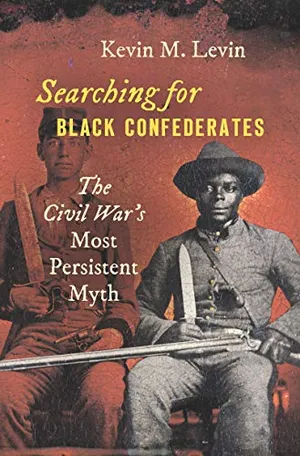
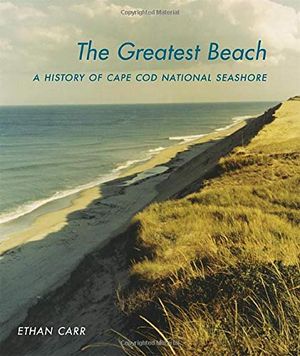
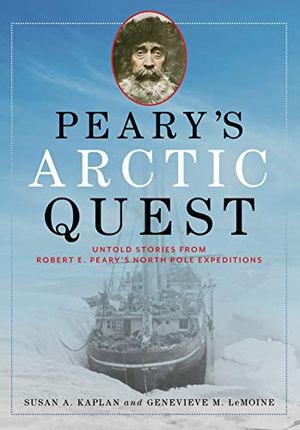
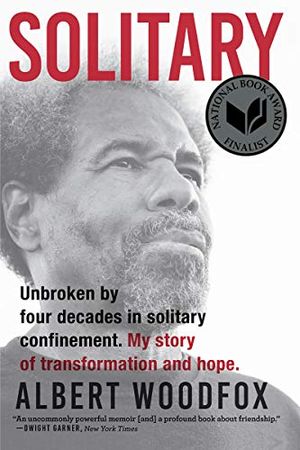
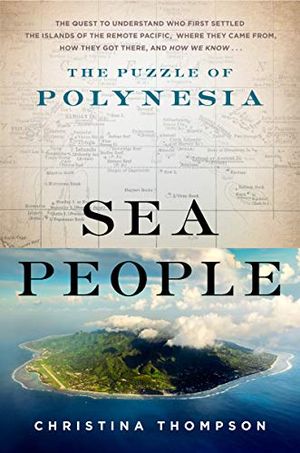
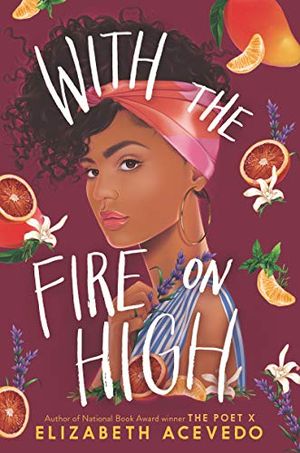
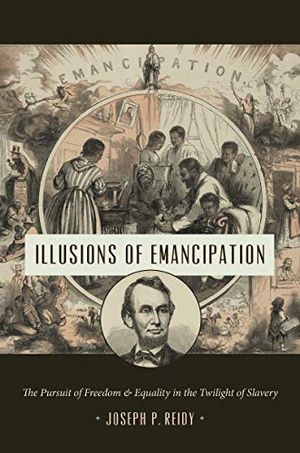

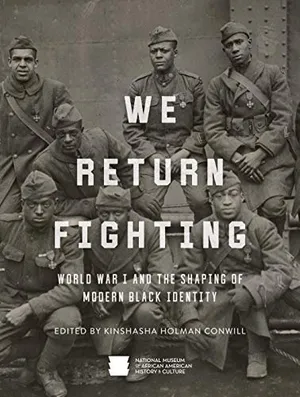
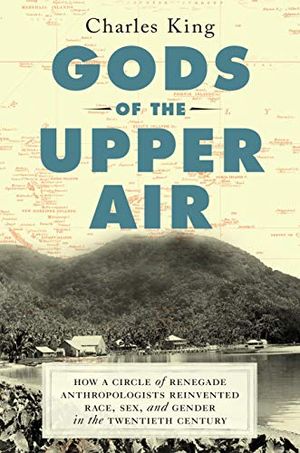
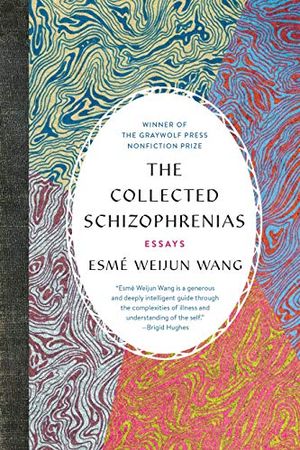
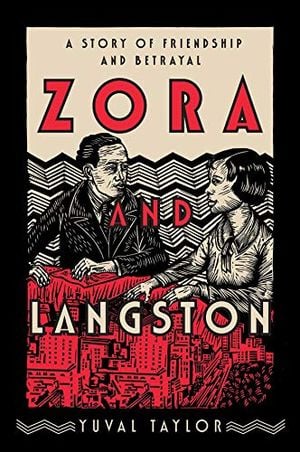
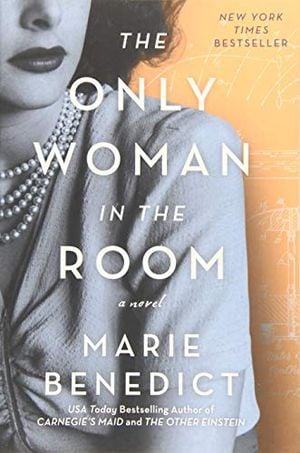

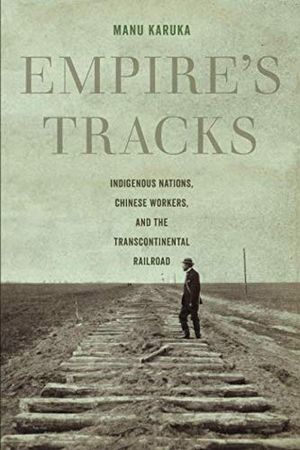
/https://tf-cmsv2-smithsonianmag-media.s3.amazonaws.com/accounts/headshot/Beth_Head_Shot_High_Res-14-v2.png)